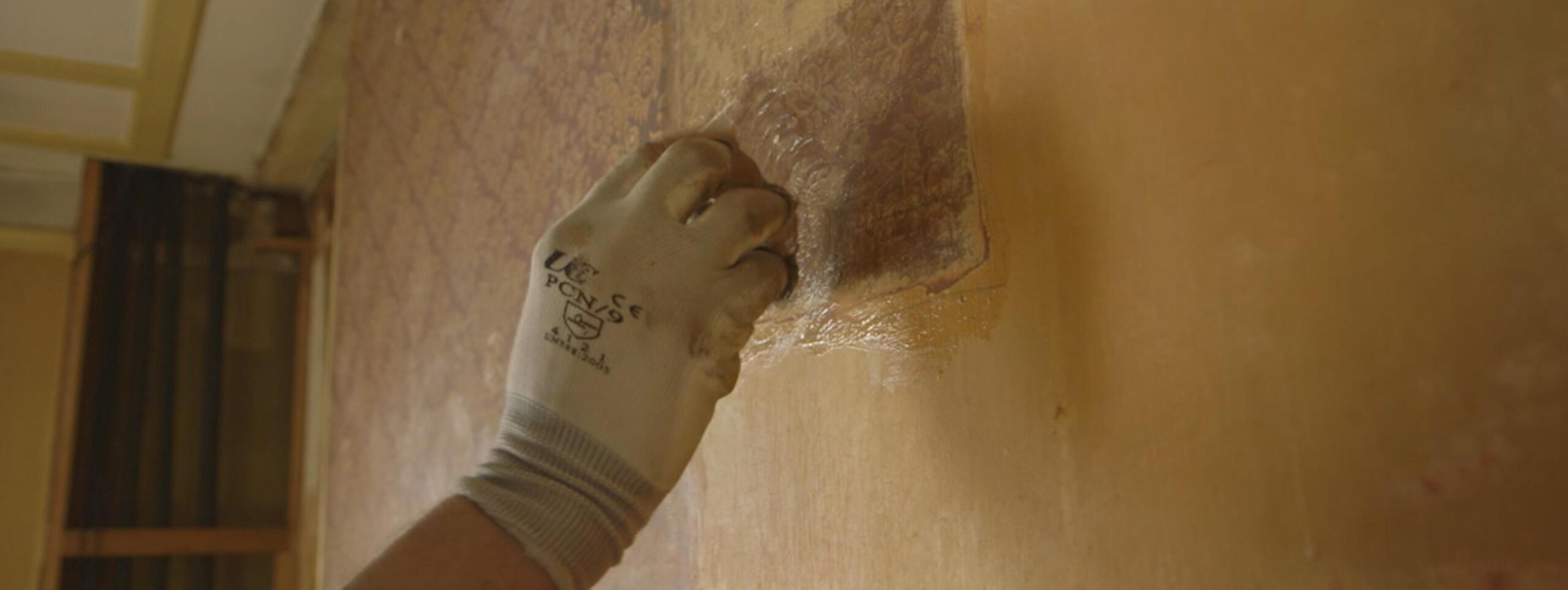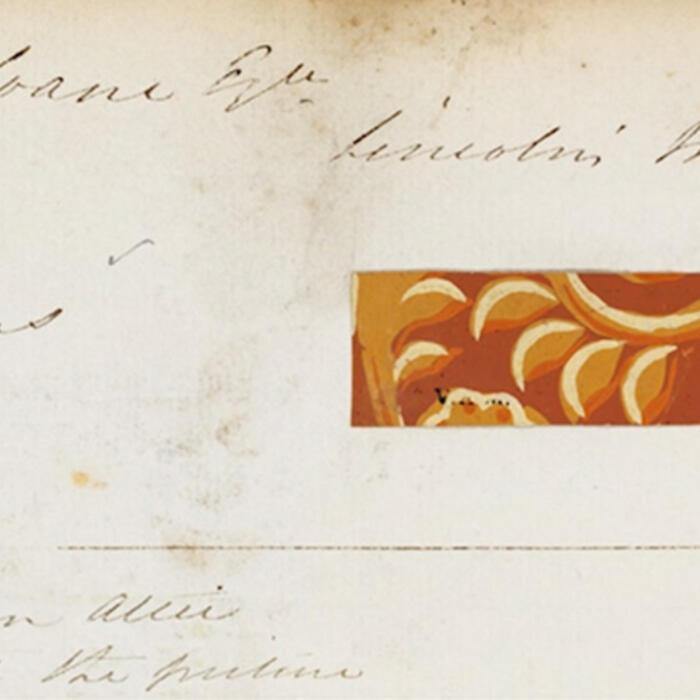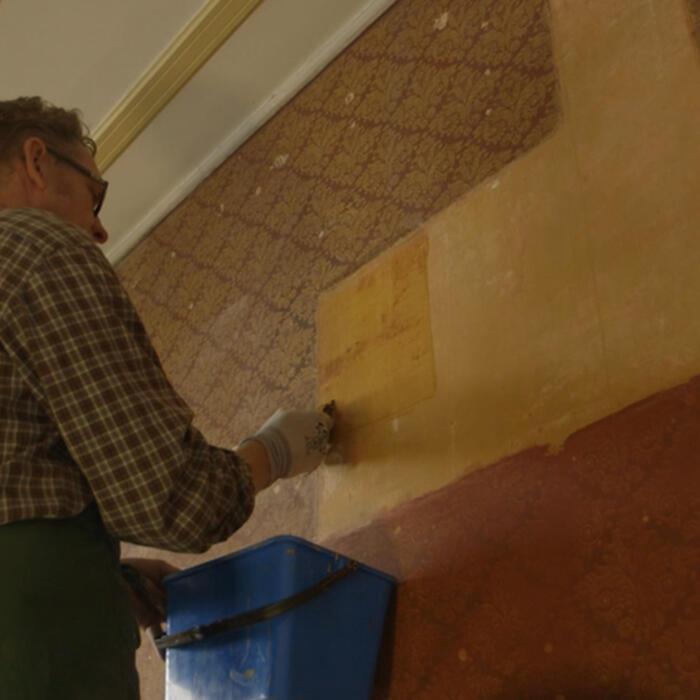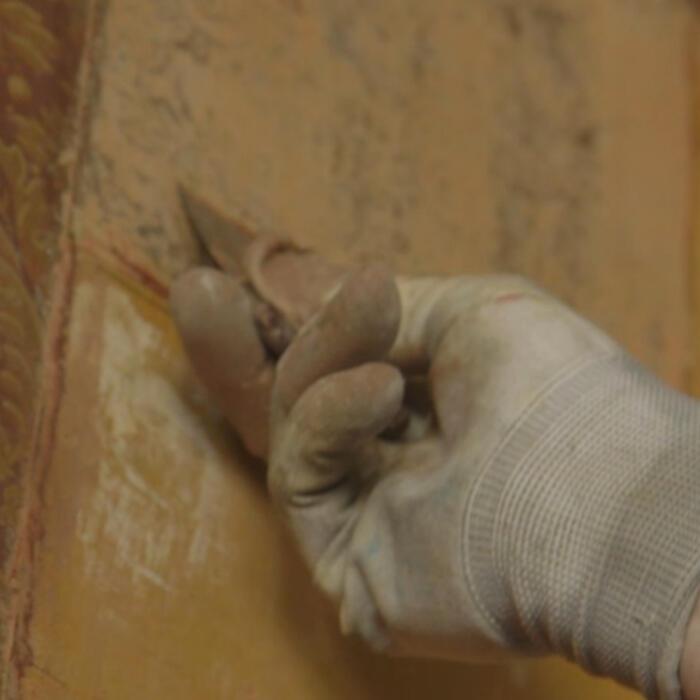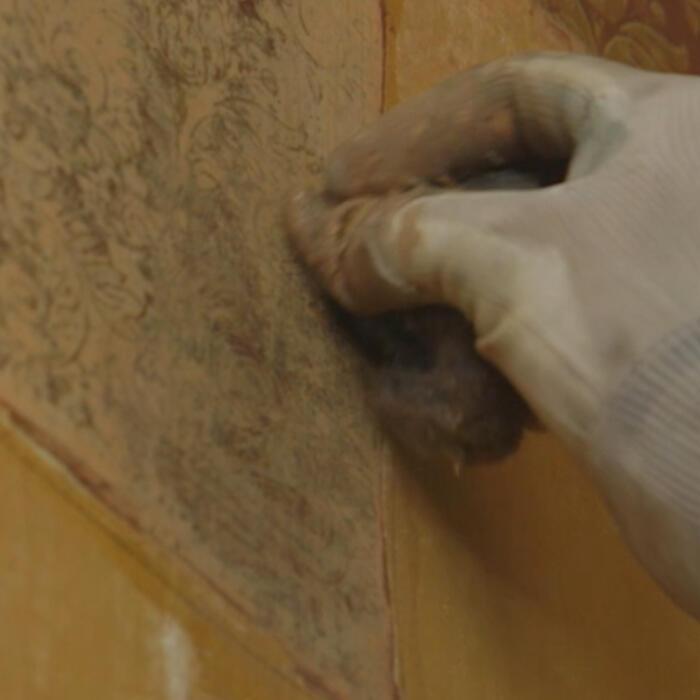The Soane Museum's archives informed us of an original wallpaper in the Private Apartments. Conservators searched for this paper and stripped away several layers of wallpaper to reach surviving fragments.
Researching the original wallpaper Back to top
A number of bills in the Soane Museum’s rich archive prove that the second floor of 13 Lincoln’s Inn Fields, where Soane had his bedroom, bathroom and Model Room, was wallpapered throughout in the same paper, made by Cowtan.
At the start of the Opening up the Soane project we had just one tiny piece of physical evidence – a small sample of Soane’s wallpaper pasted into the Cowtan Order Book in the Victoria and Albert Museum. Whilst this provided precise evidence of the original bright colours it didn't show enough of the pattern to reproduce the paper.
The first priority on site, as soon as the area was vacant, had to be to search for any surviving fragments of Soane’s wallpaper beneath many layers of later paint and paper on the second floor itself.
Choosing where to search Back to top
To do this Julian Harrap Architects turned to Mark Sandiford, a leading specialist in the conservation of historic wallpaper, well-versed in this kind of search. He began in the recently vacated back office, around the chimneybreast in what was originally Soane’s Bath Room.
In Mark’s experience, decorators often don’t fully strip fireplace walls because it’s more complicated to do, and so fragments of older wallpapers can commonly be found to survive in those areas. Initially, the walls looked extremely unpromising, covered in a modern anaglypta paper and painted yellow, the most recent of many re-decorations since Soane’s time. However, after a few hours work Mark was able to report that there was at least one large surviving area of paper.
Stripping to the original wallpaper Back to top
The stripping process undertaken to uncover the early 19th century paper is highly skilled and requires the utmost attention. As Mark says, it is ‘potentially boring’ but requires you to ‘maintain total concentration’ or risk damage to the delicate paper you are trying to uncover.
Using paint stripping chemicals the upper layers of paint and modern paper are removed. Then chemicals are applied to soften the remaining over-paint and a sharpened continental filling knife used to remove it – a painstaking process that involves sliding the tool gently across the surface without applying pressure so as to avoid causing damage.
The last remnants of paint on the surface of the original paper are then removed with extreme care using a medium-to-fine wire wool. This sounds drastic but Mark has found that it is the most effective method. The most important aspect of this final stage of work is to avoid damaging the surface of the original paper by ‘working’ it too much. Using a softer material, such as cotton wool, requires more pressure and more work and therefore causes more damage.
The results Back to top
Mark Sandiford’s work revealed surviving wallpaper on almost the entire east wall of the Bath Room. This provided all the evidence required to recreate the repeat pattern and enabled us to commission reproduction wallpaper which precisely replicates the original paper hung by John Soane in the early 19th century.
